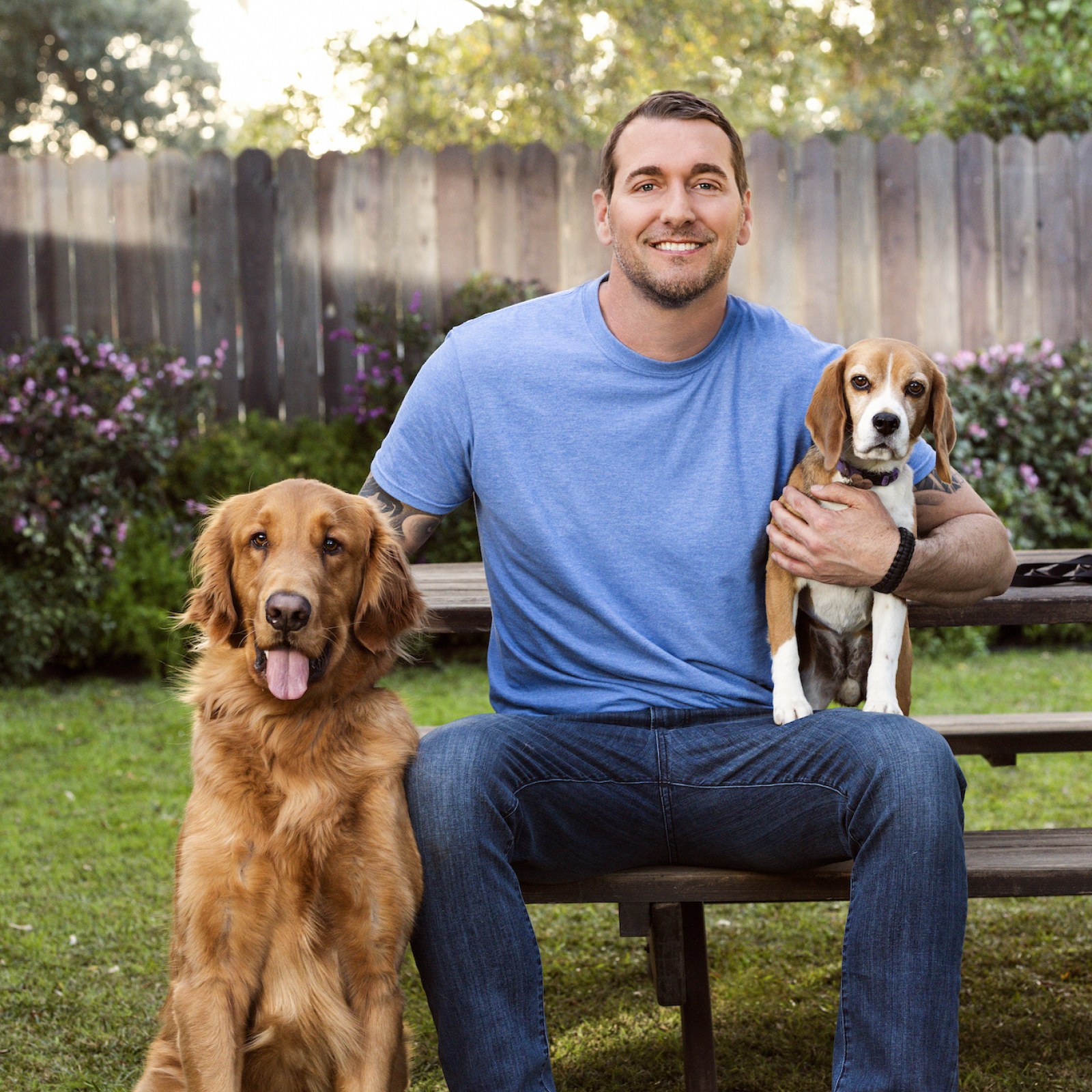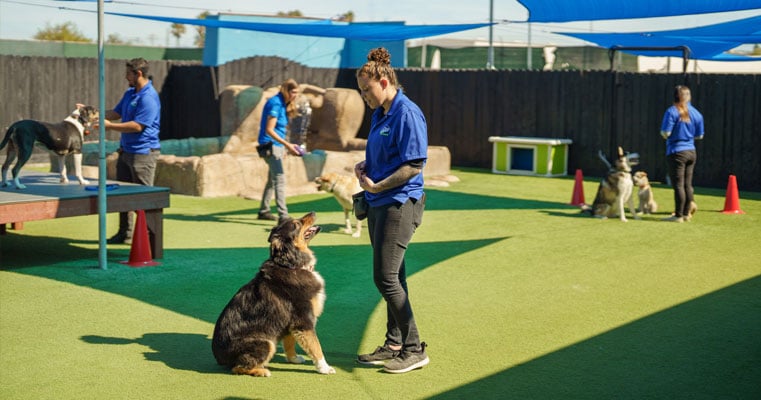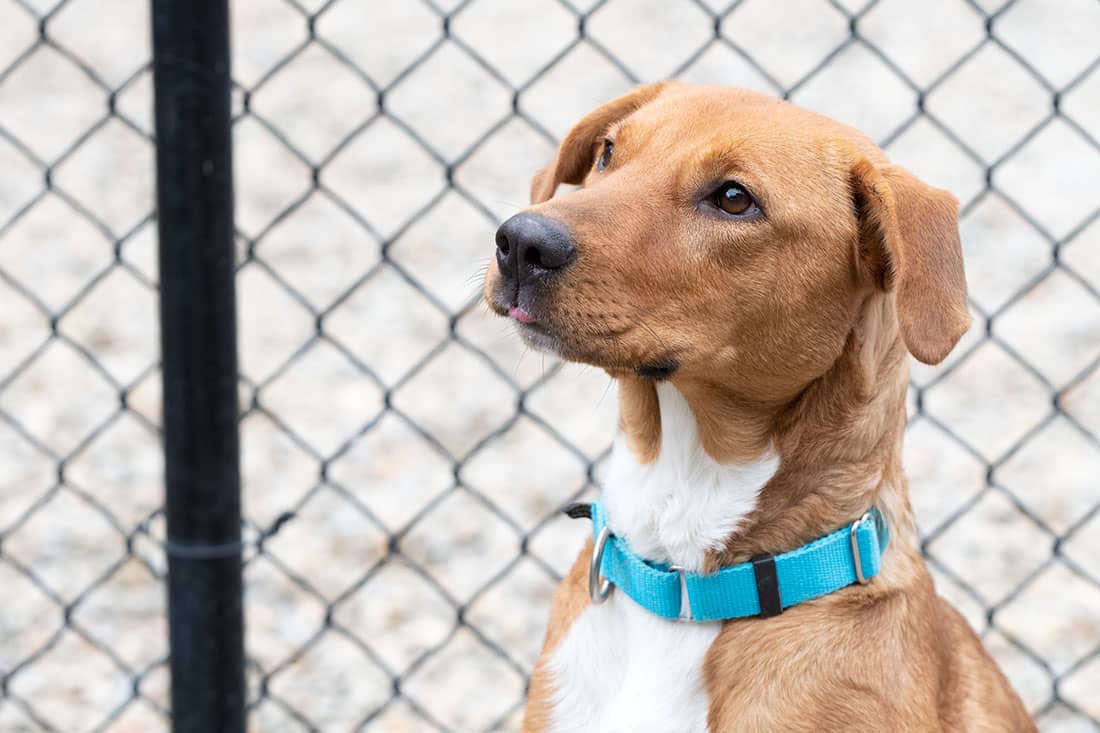Essential Tips for Successful Dog Training: An Overview for Animal Owners
Effective canine training is a complex procedure that calls for a strategic method customized to both the pet dog's temperament and the proprietor's objectives. Comprehending exactly how to navigate these barriers can considerably boost the training experience, ultimately transforming the partnership between owner and pet dog.
Understanding Dog Actions
Comprehending pet dog behavior is essential for reliable training and fostering a harmonious relationship in between dogs and their proprietors. Pet dogs interact mostly with body movement, vocalizations, and actions, making it important for proprietors to analyze these signals accurately. Identifying a dog's position, tail position, and ear alignment can supply insights into its psychological state. For example, a wagging tail does not always show joy; it can additionally signal exhilaration or stress and anxiety.

Socializing plays a considerable role in dog habits; direct exposure to different atmospheres, individuals, and other animals can significantly influence a pet dog's character. Factors such as type qualities and private temperament ought to assist training approaches, as some types might have particular behavioral traits that necessitate customized methods. By understanding these components, owners can produce a helpful setting that encourages favorable behavior, leading to successful training results and a much deeper bond with their animals.
Establishing Consistent Commands
Efficient interaction with your canine starts with establishing consistent commands. This foundational component of training is vital for promoting understanding in between you and your animal. Consistency in the commands you use guarantees that your canine can reliably link details words or phrases with the wanted behaviors.
When selecting commands, choose clear, distinct words that are very easy to say and separate from each other. Avoid utilizing similar-sounding commands that might confuse your canine. Utilizing "rest" and "stay" is appropriate, however "rest" and "struck" might lead to misunderstandings.
In addition, maintain the same tone and quantity for every command. Pets are sensitive to vocal cues, so varying your tone can create complication.
It is similarly essential to make sure that all family members are on the very same web page pertaining to the commands used. A united front in command usage will certainly prevent combined signals and reinforce the learning procedure.
Positive Reinforcement Strategies
The power of positive reinforcement in pet dog training depends on its ability to encourage wanted habits through rewards and appreciation. This strategy is based in the concept that habits followed by favorable results are most likely to be repeated. By incorporating positive support into your training routine, you can properly form your canine's habits in a useful manner.
To implement favorable support, it's vital to determine what encourages your pet, whether it be treats, toys, or spoken appreciation. When your dog does a wanted activity, such as remaining on command, quickly award them with a reward or love. This organization between the command and the Visit This Link favorable end result strengthens their understanding.
It's critical to timing the rewards appropriately; providing the support within seconds of the desired actions helps your pet make the link (dog training). Furthermore, consistency is key-- make sure that all relative use the same commands and benefit systems to stay clear of complication

Slowly, you can decrease the frequency of treats as check these guys out your pet dog learns the habits, transitioning to praise or periodic rewards. This method not only fosters a solid bond between you and your dog but also advertises a positive discovering atmosphere, making training a satisfying experience for both.
Socialization and Communication
Continually subjecting your pet dog to a selection of environments, people, and various other pets is essential for their social development. Socialization should start early, ideally throughout the essential window of 3 to 14 weeks, when pups are most receptive to brand-new experiences. Nevertheless, older canines can also gain from continuous socializing efforts.
Present your pet dog to different setups, such as parks, pet-friendly shops, and city locations. This exposure assists them adjust to different stimulations, reducing anxiousness and fear feedbacks. Motivate favorable interactions with other canines and people, making sure that these experiences are safe and controlled to foster self-confidence.
Use structured playdates with well-mannered dogs, as this can enhance your pet's social skills and educate them appropriate habits. Obedience classes and training sessions additionally offer excellent opportunities for socializing, permitting your pet to engage with others in a supervised environment.
Screen your pet dog's body language during interactions, as this will certainly aid you assess their comfort degree. Gradually raise exposure to more tough situations while guaranteeing that each experience declares. A well-socialized dog is much more likely to display well balanced actions, making them a delight to have in any setup.
Addressing Typical Training Obstacles
Every canine proprietor will certainly encounter training obstacles eventually, no matter their pet's age or socializing level. Identifying typical issues such as stubbornness, distractions, and terror can assist in developing effective techniques for enhancement.

Progressively introduce disturbances as the pet comes to be a lot more efficient in commands. Short, frequent training sessions are likewise reliable in keeping attention.
Terror can impede a pet dog's discovering process. Steady desensitization to the source of worry, paired with positive support, can assist relieve stress and anxiety. Perseverance is critical; never require a canine into a situation that causes distress, as this might intensify the issue.
Ultimately, understanding and addressing these typical obstacles with an organized approach will cultivate a much more productive training experience, reinforcing the bond between pet dog and proprietor while promoting effective learning.
Conclusion
In recap, effective pet dog training relies on a comprehensive understanding of canine habits, the establishment of consistent commands, and the application of positive reinforcement strategies. Socialization plays an important duty in establishing well-adjusted pets, while addressing typical training difficulties requires perseverance and adaptability. By applying these important approaches, pet dog proprietors can promote a strong bond with their canines and advertise desirable actions, ultimately resulting in a harmonious connection between human beings and their canine companions.
Understanding pet habits is crucial for effective training and fostering a harmonious relationship in between pooches and their owners.Socializing plays a substantial role in dog habits; exposure to numerous settings, individuals, and other pets can dramatically affect a pet dog's temperament.The power of positive reinforcement in dog training lies in its capacity to urge preferred behaviors via rewards and praise. By integrating favorable support into your training program, you can efficiently shape your canine's behavior in a constructive way.
In recap, successful pet training depends on an extensive understanding of canine habits, the facility of constant commands, and the application of positive reinforcement methods.